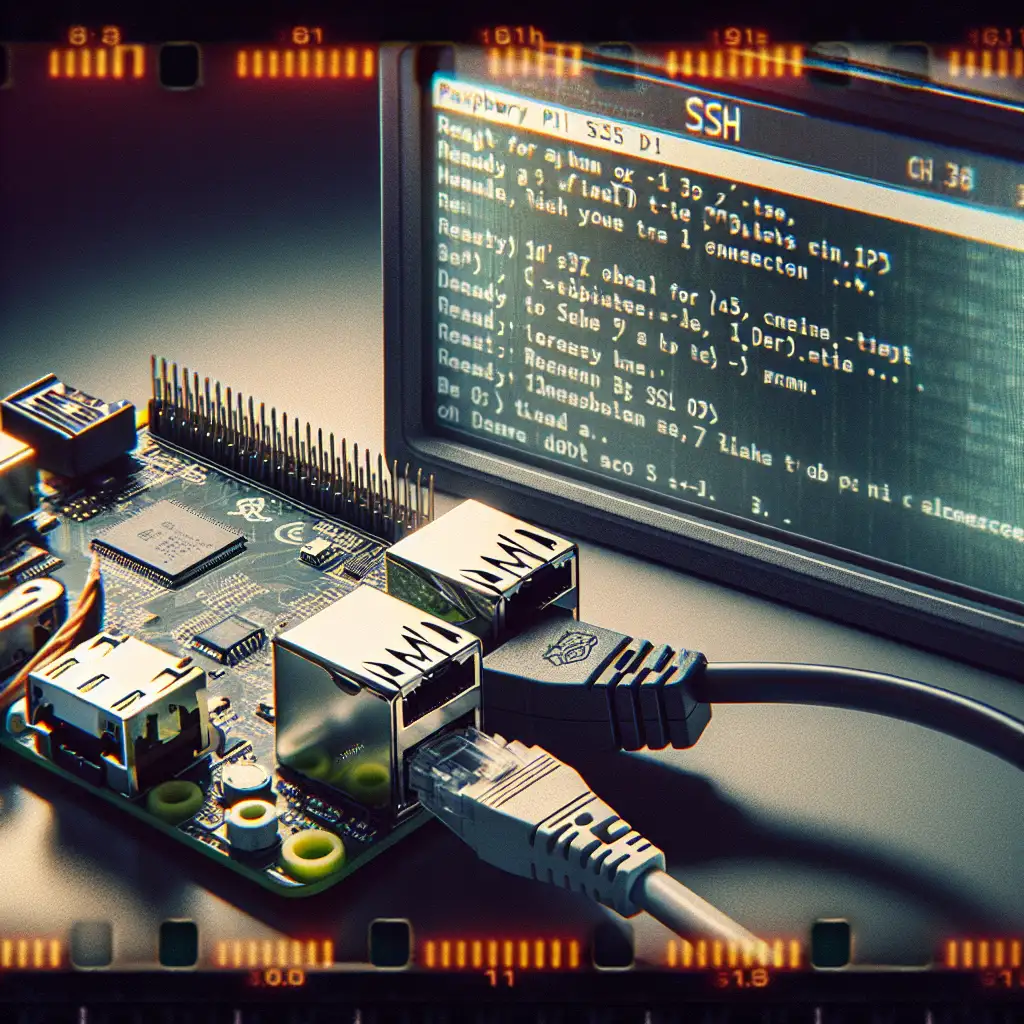SSH into Your Raspberry Pi Locally—A Real Engineer’s Workflow
You deploy a Pi in the field—no monitor, no keyboard, wedged behind a rack. How do you actually gain remote terminal access without wasting time? Local SSH is the essential mechanism.
SSH Access: Why Bother?
Direct console connections are inefficient. With SSH, you can deploy code, update configs, and troubleshoot from anywhere on your LAN. Best practice: eliminate physical dependencies early in your workflow.
- No direct access required; ideal for IoT or remote sensor installations.
- Supports SCP/SFTP for file transfers, batch administration, and remote debugging.
- Critical for CI/CD deployment of ARM workloads.
Enabling SSH on Raspberry Pi OS (Bullseye, Bookworm, etc.)
Default configuration (Raspberry Pi OS as of 2023) ships with SSH service disabled. Unsafe to assume otherwise—explicitly enable.
Interactive Setup
- Attach monitor and input devices (not always feasible).
- Run in terminal:
Navigate: Interface Options → SSH → Enable.sudo raspi-config
Alternatively, via UI: Preferences → Raspberry Pi Configuration → Interfaces → SSH → Enable.
Headless Activation (No Console)
- Flash OS image (tested: Raspberry Pi Imager v1.7+).
- After imaging, reinsert SD card on workstation.
- In
/bootpartition (Windows/macos: appear as USB volume), drop a file:
Empty file, no extension. (On Windows, ensure hidden file extensions are disabled—touch sshssh.txtfails.) - Optionally, configure Wi-Fi beforehand: add
wpa_supplicant.confto/bootif wireless is required.
Remove SD, insert into Pi, power up. SSH should be listening on port 22.
Known issue: Unsafely removing the SD card before unmounting can corrupt the boot sector. Double-check.
Networking: Ensuring the Pi Is Reachable
Ethernet provides deterministic connectivity—Wi-Fi introduces variability in consumer-grade environments (e.g., DHCP lease instability). Still, both are serviceable.
- Static IP assignment via router DHCP reservation is recommended for persistent SSH access; dynamic IPs can rotate unpredictably.
- For initial detection, DHCP is sufficient.
Discovering the Pi’s Local IP
On the Router
Web UI (commonly 192.168.1.1 or 192.168.0.1).
Scan DHCP leases. Device hostname defaults to raspberrypi.
From a Workstation
Windows (PowerShell or CMD)
arp -a
Look for the MAC address prefix assigned to Raspberry Pi Foundation (b8:27:eb or dc:a6:32, etc).
Linux/macOS
nmap -sn 192.168.1.0/24
Or, if Avahi/Bonjour/mDNS is running:
ping raspberrypi.local
Non-obvious tip: Multiple Pis on the same network may conflict on mDNS hostnames; unique hostnames mitigate this.
SSH Login
Default credentials (for Raspberry Pi OS 2023+):
- Username:
pi - Password:
raspberry
CLI-based connection:
ssh pi@192.168.1.42
Replace with actual IP. Expect this on first connect:
The authenticity of host '192.168.1.42 (192.168.1.42)' can't be established.
ECDSA key fingerprint is SHA256:...
Are you sure you want to continue connecting (yes/no)?
Fingerprint validation is trivial on a trusted local network, but check in sensitive deployments.
On Windows (legacy)
If ssh is not recognized (older Windows versions), use PuTTY:
- Host:
<IP> - Port: 22
- Username:
pi
Hardening: Post-Login Immediate Actions
First step: Eliminate default credentials.
passwd
Set robust, non-dictionary password.
SSH Key Authentication
Prefer keypair login over passwords:
- Generate an ed25519 keypair on the client:
ssh-keygen -t ed25519 -C "pi@local" - Copy the public key:
Ifssh-copy-id pi@192.168.1.42ssh-copy-idis not present (e.g., some Windows or minimal Linux distros):cat ~/.ssh/id_ed25519.pub | ssh pi@192.168.1.42 'mkdir -p ~/.ssh && cat >> ~/.ssh/authorized_keys' - Test passwordless SSH. When confirmed, edit
/etc/ssh/sshd_config:
Reload SSH:PasswordAuthentication nosudo systemctl reload ssh
Troubleshooting: Typical Obstacles
SSH Refused / Timeout
- Service not running:
sudo systemctl status ssh - Start or enable service:
sudo systemctl enable --now ssh - Firewall (rare on Raspbian, but happens if user installed
ufw/iptables):sudo ufw allow 22/tcp
Host Not Found
- mDNS not resolving: Ensure
avahi-daemonis installed and running on Pi and client supports mDNS. - IP address changed: Re-scan with
nmapor check router. - Layer 2 issues: faulty cabling, wireless isolation.
Permission Denied
- Username typo.
- Stale authorized_keys file (copy keys again).
- Locked account after repeated failures—check
/etc/passwdand/etc/shadow.
Quick Commands Reference
| Operation | Command / File |
|---|---|
| Enable SSH (headless) | Create /boot/ssh |
| Find Pi IP (Linux/macOS) | nmap -sn 192.168.1.0/24 |
| Connect to Pi | ssh pi@<IP> |
| Change default password | passwd |
| Generate SSH key | ssh-keygen -t ed25519 |
| Deploy key to Pi | ssh-copy-id pi@<IP> |
| Disable password authentication | Edit /etc/ssh/sshd_config, set PasswordAuthentication no |
Notes from Experience
- Host key warnings occasionally persist after re-imaging SD cards—remove old entries in
~/.ssh/known_hosts. - Multiple Pis with the same default hostname (
raspberrypi.local) create chaos in mDNS/Bonjour networks. Adjust/etc/hostnameper device. - If you use custom OS images (DietPi, Ubuntu), SSH setup differs.
You now have a robust, reproducible process to SSH into any freshly deployed Raspberry Pi on your LAN. No assumptions about GUI access, no security loopholes. Further hardening or automating this workflow? Consider integrating into your provisioning scripts—nothing stops you from building a mini-fleet.
Note: For WAN SSH access (outside your LAN), additional steps—port forwarding, fail2ban, or VPN—are required. Not covered here for security reasons.
